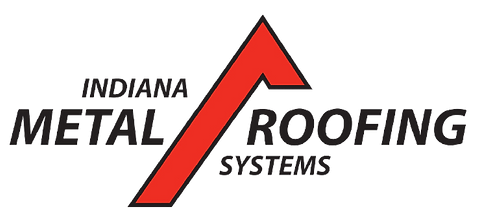Understanding Differences in Metal Roofing Panel Profiles
- Joseph Justice
- Jun 2
- 3 min read
When it comes to metal roofing, the design isn't just about style — it's about performance. One of the most critical decisions homeowners and contractors face is choosing the right panel profile. The profile of a metal roofing panel affects not only the appearance of a home but also its structural performance, energy efficiency, and weather resistance. In this blog, we'll break down the most common metal roofing panel profiles and explore what sets them apart.

Why Panel Profiles Matter
Panel profiles determine how metal roofing is installed, how water is shed, and how the roof handles environmental stress. In regions like Fort Wayne, IN, where heavy snow, rain, and seasonal temperature shifts are frequent, selecting the right panel can make a big difference in longevity and efficiency.
Some profiles are designed for low-slope roofs, while others work best for steep pitches. Additionally, each profile type has unique fastening systems that influence the roof’s wind resistance, maintenance needs, and aesthetic finish.
Standing Seam Panels
Standing seam metal roofing is among the most popular and advanced panel profiles available today. These panels feature vertical ribs (seams) that rise above the level of the roof, providing a sleek, contemporary appearance. More importantly, the seams are often mechanically locked or snapped together, concealing fasteners and reducing the chance of leaks.
The concealed fastener system in standing seam panels makes them ideal for high-performance applications. They allow for thermal movement, resist wind uplift, and require minimal maintenance. Although they come at a premium price, their longevity and refined appearance justify the investment for many homeowners.
Corrugated Panels
Corrugated panels are characterized by their repetitive, wavy pattern. They’ve been used for decades in both agricultural and residential applications, appreciated for their rugged strength and cost-effectiveness. These panels are generally fastened through the face with exposed screws, which makes installation quicker and more affordable but may lead to increased maintenance over time.
Corrugated profiles are great for rustic aesthetics and work particularly well on barns, sheds, or homes with a farmhouse design. However, they may not offer the same sleek look or hidden fastener system as standing seam roofs.
R-Panel and U-Panel Profiles
R-panels and U-panels are another popular type of metal roofing, especially in commercial and industrial contexts. These panels feature a series of squared ribs and are typically installed using exposed fasteners. R-panels offer a higher rib height and are generally thicker, making them more durable than U-panels.
For residential applications, R-panels strike a balance between strength and cost, though they’re less common on upscale homes due to their utilitarian look. That said, some homeowners embrace their bold profile for modern or industrial design themes.
Snap-Lock and Mechanical-Lock Systems
Beyond the profile shape, the method by which panels interlock is equally important. Snap-lock panels are installed by snapping one panel over a pre-formed clip or flange on the adjacent panel. This method is fast and reduces labor costs, but it may not perform as well in extreme weather.
Mechanical-lock systems, on the other hand, involve seaming the panels together using special tools. These seams are stronger and more watertight, making them ideal for areas prone to snow loads or heavy rain. While installation is more complex and expensive, the performance benefits are substantial.
Choosing the Right Profile for Your Home
The best panel profile for your home depends on a range of factors: your budget, aesthetic preferences, roof pitch, and regional weather patterns. For homes in Fort Wayne, IN, where winters can be harsh, standing seam or mechanically locked panels offer excellent performance and peace of mind.
Homeowners should also consider their long-term maintenance tolerance. If minimizing upkeep is a priority, concealed fastener systems are a wise choice. On the other hand, those seeking a more rustic or budget-friendly solution may find corrugated or R-panels more suitable.
Expert Guidance and Reliable Installation
Choosing the right metal roofing profile isn’t just about selecting the panel — it’s about choosing the right installer. A professional roofing contractor like Indiana Metal Roofing Systems can walk homeowners through the options, explain the pros and cons, and ensure the installation is done to the highest standard.
Backed by an A+ BBB rating and 5-star customer reviews, Indiana Metal Roofing Systems continues to deliver durable, energy-efficient, and visually appealing roofing solutions throughout Fort Wayne, IN. Their expert knowledge of panel profiles and precision workmanship guarantees performance and value that lasts for decades.
Final Thoughts
Understanding the differences in metal roofing panel profiles is essential to making the right choice for your home. Whether you’re aiming for a modern, minimalist appearance or a traditional, rugged style, there’s a metal panel profile that fits your needs. By consulting with knowledgeable professionals and investing in quality materials, you can ensure a roof that not only protects but enhances your home.
Read also our blog: Evaluating the Benefits and Drawbacks of Metal Roofs


Comments